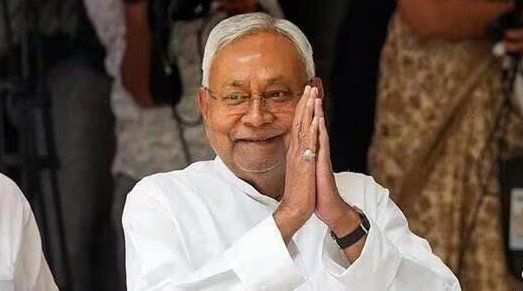125 Units Free From August 1: A Pre-Poll Gamble That Could Light Up Votes
In a high-stakes move that could sway millions of voters, Bihar Chief Minister Nitish Kumar announced on Thursday that domestic households will receive up to 125 units of electricity free of cost starting August 1. The timing, just months ahead of the assembly elections, is no coincidence.
This isn’t just a utility waiver — it’s a pitch for trust, delivered via power lines.
A Policy Rooted in Political Strategy
Nitish Kumar didn’t mince words. In a post on X, he made it official: starting from the July billing cycle, “no domestic consumer will pay for the first 125 units.” It was a simple sentence. But behind it lies a carefully calculated move aimed at nearly 1.67 crore households across Bihar.
This is the first time the state has promised a blanket power subsidy of this size. Until now, Bihar’s rural electrification record had improved over the years, but affordability remained a concern — especially in backward regions where per capita income still lags behind national averages.
Kumar’s move comes as his alliance faces growing pressure. Rivals have been gaining ground by targeting his leadership and alleging fatigue in the administration. The free power promise shifts the focus back to bread-and-butter issues — or in this case, bulbs and fans.
Who Stands to Gain?
The numbers are huge. According to government estimates, around 1.67 crore families — out of Bihar’s 2.1 crore total households — are expected to benefit. That includes both urban middle-class families and large chunks of the rural poor.
For many households, 125 units could cover nearly the entire month’s electricity use. In a state where many still rely on ceiling fans and basic lighting, that could mean zero power bills for lakhs of families.

One local contractor in Muzaffarpur broke it down like this: “We use maybe 90 to 100 units a month. If this actually happens, we’ll pay nothing. That’s a big relief.”
• Approximate number of households to benefit: 1.67 crore
• Expected average monthly consumption for rural homes: 70–110 units
• Monthly savings for average user: ₹300–₹600
Not Bihar’s First Electricity Leap — But the Boldest
This isn’t the first time Nitish Kumar has leaned on the power sector to build political goodwill.
During his earlier terms, rural electrification took center stage. Between 2006 and 2016, Bihar went from one of the worst electrified states to claiming nearly 100% village connectivity — at least on paper. What changed now is the shift from infrastructure to affordability.
In 2018, Kumar’s government introduced the Har Ghar Bijli scheme, ensuring every household had a connection. The focus back then was connectivity. Today, it’s relief.
This shift matters. Because while access to power increased, bills remained a headache for low-income users. Especially in months like April through August, when fans, coolers, and water pumps run non-stop.
This new move is basically Kumar saying, “Don’t just plug in — plug in free.”
What It Means for the State’s Budget
Now comes the money part.
Bihar’s total annual electricity subsidy bill has hovered around ₹6,000 crore in recent years. With this scheme, insiders suggest that number could rise by ₹2,500–₹3,000 crore, depending on consumption patterns.
Here’s a simplified look:
| Item | Current (Est.) | Post-Scheme (Est.) |
|---|---|---|
| Annual Power Subsidy | ₹6,000 crore | ₹8,500–₹9,000 crore |
| Beneficiaries (Households) | 1.67 crore | 1.67 crore |
| Per Household Monthly Subsidy (avg.) | ₹300–₹600 | ₹0 (for 125 units) |
State officials argue the cost is “manageable,” especially if electricity demand stays stable. However, some experts say this could stretch the state’s resources unless additional central funds come through or discoms receive extra support.
One senior Patna-based bureaucrat privately called it a “risky but smart” move. Risky, because energy subsidies are hard to roll back. Smart, because it’s immediately felt.
Opposition Cries Foul — But Can’t Ignore the Buzz
Predictably, opposition leaders weren’t impressed. RJD and Congress leaders accused Kumar of “election bribery disguised as policy.” But none of them outright opposed the benefit.
That’s telling.
“We’ve been demanding electricity cost relief for years,” said a Congress spokesperson. “Suddenly now, a few months before elections, the CM wakes up?”
Even so, in public squares and on WhatsApp groups, people are talking less about motives and more about savings. Especially in places like Siwan, Purnia, and Gaya — all swing regions where vote margins often hover under 3,000.
One local farmer put it bluntly: “Politics is politics. But ₹500 less each month is ₹500 more for us.”
A State With a Long Memory for Electricity
Power — or lack of it — has always been a political issue in Bihar. In the early 2000s, entire districts went dark after sundown. Students read under kerosene lamps, and small businesses relied on diesel generators. The shift to near-universal connectivity was a turning point for Nitish Kumar’s legacy.
That legacy is now under test.
Whether this new scheme cements that or falls flat will depend on delivery. One missed billing cycle or one faulty implementation in August could undo the entire narrative.
Still, Kumar’s camp seems confident. Officials have reportedly instructed discoms to ensure billing software is updated by July-end. The energy department has also been asked to run awareness campaigns in both Hindi and regional dialects.
